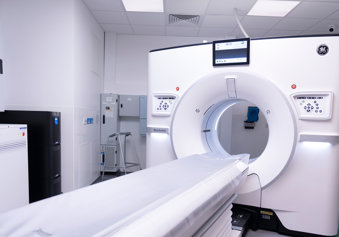What ‘good’ radiology training looks like – now and in the future
Six years on and following the COVID–19 pandemic, we look at how teaching, diagnostic and procedural training has adapted and the innovations that are likely to stay. We recognise that there is still lot of work to do, but we hope that training programmes will continue to build on these positive developments – allowing for the training of more radiologists year-on-year.
Key insights:
Target 1: Teaching
We are still learning the benefits of remote teaching vs. those of face-to-face teaching, as well as the ability to pre-record sessions that could be watched at a time that suited trainees.
This combination looks likely to continue into the future, with online resources helping to secure the place of remote teaching.
Target 2: Diagnostic training
Technology has allowed for online training even in the diagnostic space, and trainees often joined a consultant reporting session and view their screens.
Whilst attendance online is easier, it does make it more difficult to gain the opportunity to present cases.
Face-to-face training seems to be particularly important for junior trainees in this area and for all trainees undertaking departmental duty sessions.
Target 3: Procedural training
Whilst remote training and simulated environments were suitable for basic training, training programmes have reflected that procedural training is most effective when face-to-face elements are incorporated.
The interaction with patients helps to develop communication skills, whilst the environment creates informal training opportunities through huddles, board rounds and debriefs. It is also more helpful as trainees learn how to manage complications.
Delivery of procedural training is likely to remain relatively traditional, with the addition of online resources to support trainees rather than
Target 1: Teaching
We are still learning the benefits of remote teaching vs. those of face-to-face teaching, as well as the ability to pre-record sessions that could be watched at a time that suited trainees.
This combination looks likely to continue into the future, with online resources helping to secure the place of remote teaching.
Target 2: Diagnostic training
Technology has allowed for online training even in the diagnostic space, and trainees often joined a consultant reporting session and view their screens.
Whilst attendance online is easier, it does make it more difficult to gain the opportunity to present cases.
Face-to-face training seems to be particularly important for junior trainees in this area and for all trainees undertaking departmental duty sessions.
Target 3: Procedural training
Whilst remote training and simulated environments were suitable for basic training, training programmes have reflected that procedural training is most effective when face-to-face elements are incorporated.
The interaction with patients helps to develop communication skills, whilst the environment creates informal training opportunities through huddles, board rounds and debriefs. It is also more helpful as trainees learn how to manage complications.
Delivery of procedural training is likely to remain relatively traditional, with the addition of online resources to support trainees rather than
We would like to thank all of the trainers, training programme directors, academy leads, heads of school and trainees from both Clinical Radiology and Interventional Radiology, who contributed to this guide. A full list of those involved are in our project acknowledgements.
Clinical radiology
We’re here to support you throughout your career in clinical radiology – offering innovative training and promoting the specialty so that you have the resources you need to deliver better patient care.
